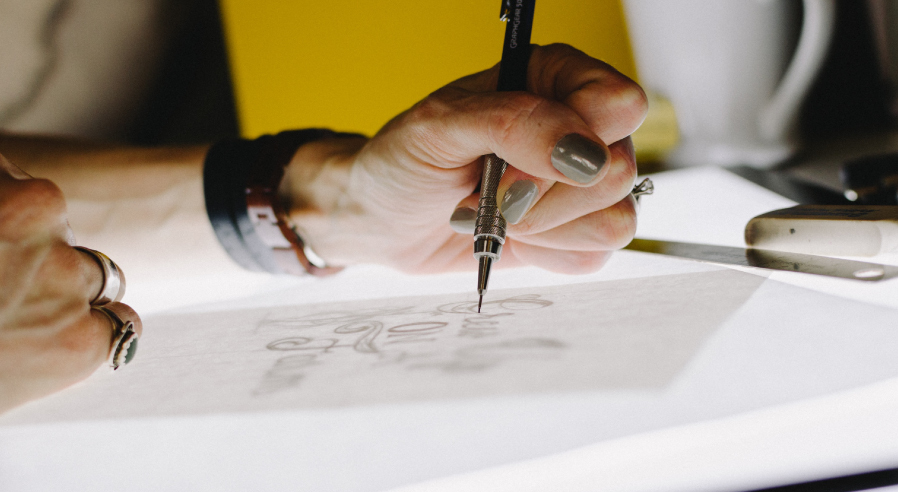Priorities and needs are changing in any growing company that is facing new external challenges. Businesses must ensure that their partner teams are aware of the newer skills while keeping old ones current. This will help them keep their results and productivity optimized. Especially, when it comes to partnering with UX design teams.
Functional and well-structured design teams are the heart and soul of great designs that drive profits.
Hiring an appropriate team with the right UX designer skills isn’t an easy task. As many multi-star reviews you may see, or testimonials you may read, finding the right design team specific to your business needs is tricky. So, here we are, listing out the most essential UX designer skills and product design skill set you need to look for to ensure that your partnership is a good fit.
UX Design Skillset to Look for in a Team
UX design is at the core of successful product development. The right team is the one that possesses the UX design skills needed to take your project to fruition. Conduct research related to your industry, users, and competitors. It is a must to create functional, desirable, and user-friendly product designs. They can also provide support in the form of sage and professional guidance about UX design consultations.
Let’s get started with understanding the information you need to gather to answer the question, how to find the best UX design agency?
How do we gauge their UX design skills or design aesthetic?

Gauging the capabilities and potential of a UX design agency is the primary priority. This includes visual UX designer skills as well as performance output. To do so, start by asking them to share details of
- the different kinds of projects they’ve taken up,
- the problems they’ve managed to identify,
- the methods they used to solve them,
- and the relevancy of their solutions.
View the screens they’ve created to observe the design patterns such as spacings and layouts. Make the best use of your judgment and sensibilities to observe the flow of information and see if the navigation is simple to understand.
It of course doesn’t end here. Visually appealing design is not the ultimate benchmark of good user experience. The goal of UX design is fulfilling business goals while keeping user needs in mind. Every project needs to establish metrics to keep the users and stakeholders happy. So ask for concrete and real-time examples, such as
- the time needed for task completion,
- processes and workflows,
- workflow improvement strategy,
- productivity metrics, etc.
These KPIs reveal the actual impact of the design and thus help in making a holistic assessment.
Healthy collaboration is vital to the success of a design project.
How does the team fare regarding communication?

Communication skills are essential for design teams. And, this is not just about the tools they use. Yes, having Slack/Basecamp groups is great), but you need to pay heed to their style of communication, the frequency, and the enthusiasm they show. Honestly, this is difficult to analyze, as pre-sales conversations tend to be more effusive and proactive. What you can do is ask about their style of functioning, the frequency of relaying updates, and points of contact.
Research states that 86% of employees and executives cite a lack of collaboration or ineffective communication for workplace failures.
Design is a collaborative process. It is also highly iterative.
Design processes often go through a lot of back and forth, information exchange, and refinements. So, ensure that your communication style suits well for the collaboration.
In case your conversations allow for it – do make it a point to observe how they handle counterpoints and their style of push-backs. Disagreements are an inevitable part of all projects and you have to make sure that these do not jeopardize your partnership. As a design team, you can expect them to take a stand in favor of the design process and technicalities and not just be yes-men at the cost of the output.
Do they possess the ability to grasp the requirements of your project?

A capable design team will show tremendous curiosity about the project. This will also be the point where you evaluate the skills for UX designers suitable for your project. It will be in the form of in-depth questions, and requests for details, and will attempt to gather as much as they can about the business.
While this may seem exhausting, it can be seen as a team that likes to immerse themselves into the project to ensure appropriate outcomes. It is also a sign that the team is doing its homework to see if the project is a good fit for them. And that they are up to the task, instead of causing issues, post-onboarding.
Therefore, pay attention to the questions they ask, and the interpretations they make of your issues. Guide them if they seem to be going off-track. The design process begins with research exercises. Any team that jumps right to showing you prototypes, especially in the absence of research data, is not doing things right.
Project management – understanding how your project will run

According to a survey, product managers report that they spend 52% of their time on unplanned firefighting activities.
Project management is the most important of all UX skills. It is essential to the success of a design project. Considerations in this regard would include whether the project will deliver as per the agreed schedules. The frequency of progress updates and provisions for delays are also taken into account.
The design team will be expected to provide you with a detailed outline of the project’s progress, step-wise. You can also expect information about the UX team structure and their members’ profiles. Gather insights on whether the teams are good with contemporary software, like Sketch, Figma, Adobe, etc.
Verify their documentation style. Find out the way they name and sort their files. See how they maintain their design libraries. It’ll tell you a lot about the team’s organizational skills.
Design teams can function in two ways – centralized and decentralized. The former is where all the design requirements come to one from different products/teams/modules. Whereas the latter has each designer assigned a module/product. The designers should be able to adapt to the needs of the situation. They should be able to function within that composition.
What design processes do they follow? Do they have what it takes to deliver a user-driven experience?

Each design team has its approach to design and has a functional UX process in place. The key to ensuring that their process has substance, look for a research-driven approach. A major chunk of the design effort isn’t dedicated to making the actual design. It lies in:
- gathering user requirements,
- outlining business goals,
- and creating workflows to identify lagging touchpoints.
If the team is eager to showcase its UX design skills without honoring the creative process, it is a clear red flag. A user-driven experience finds its roots in a research-led design approach. So, find out their level of UX designer skills in multiple areas. Some top skills for UX designers include UX research, UX audits, user testing, journey mapping, prototyping, and usability testing.
Domain expertise – how to take a stand on that?

Enterprise projects are process-heavy and domain-specific. A UX overhaul for these applications is primarily focused on three things:
1. Achieving more flexibility
2. Making them up-to-date
3. Customizing features.
So, domain expertise is always going to be a brownie point. But the real issue remains – is it essential to have? The answer to that is, no. While it may be a good-to-have quality, it should not stop you from picking a team that exhibits competence in all other areas discussed above. Unless, of course, the scope of your requirements is such that it calls for prior experience.
For instance, the healthcare industry has some rigid but mandatory compliances such as HIPAA and HITECH. Healthcare UX is a niche branch. But, there are multiple agencies with the necessary expertise and knowledge to handle such projects. So the best way to go about this is to analyze your requirements and take a call to focus on domain expertise.
It isn’t easy answering the question of what makes a good UX design team, as each project is unique and requires different UX designer skill sets. That said, the primary quality to look for is empathy. Find a team that makes an effort to understand your project, identify the right problems, and devise solutions based on them. Fancy portfolio, and having big brands as their clients are secondary.
The primary quality to look for in a UX design team is empathy.
[sp_easyaccordion id=”14933″]









